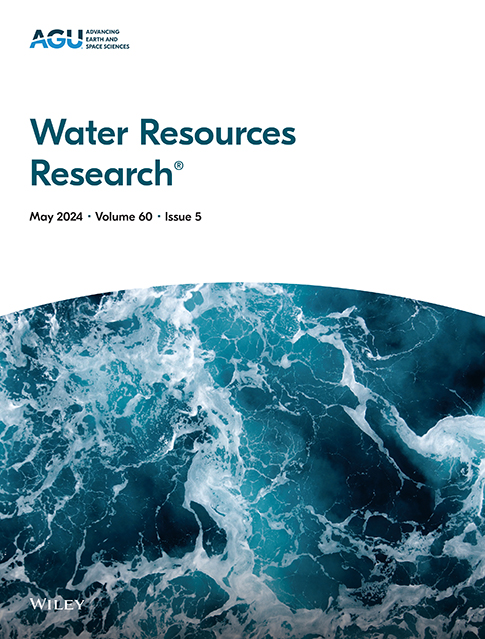Toward Trustworthy Machine Learning for Daily Sediment Modeling in the Riverine Systems: An Integrated Framework With Enhanced Uncertainty Quantification and Interpretability
IF 4.6
1区 地球科学
Q2 ENVIRONMENTAL SCIENCES
引用次数: 0
Abstract
Accurately predicting sediment dynamics and understanding their intrinsic contributors are pivotal for sustainable environment and water management. While machine learning (ML) enables precise predictions, its “black-box” nature hinders transparency and credibility, posing challenges in interpretability and uncertainty quantification (UQ). To achieve trustworthy ML for riverine sediment timeseries predictions, this study proposes an integrated ML framework, enhancing key steps: feature selection, UQ, and interpretation. Lagged hydro-environmental variables are incorporated via rigorous feature selection. SHapley Additive exPlanations (SHAP) and conformal prediction are utilized to refine interpretability and UQ, respectively. Based on 41-year multi-source data and three ensemble learning algorithms (LightGBM, XGBoost, and random forest (RF)), this study models daily suspended sediment concentration (SSC) separately for seven subtropical watersheds and evaluates overall and local accuracy. Key findings include: (a) Discharge and precipitation dominate SSC variability (explaining ∼56.8% and ∼18.9% of the variability, respectively). Sampling-day discharge and accumulative lagged precipitation should be prioritized as predictors. Precipitation-discharge interaction effects on SSC exhibit simple threshold effects, whereas the interaction effects of hydrological (precipitation, discharge) and environmental (SPEI, land cover) factors involve complex, bidirectional threshold effects. (b) LightGBM and XGBoost excel in long-term/general prediction, while RF outperform for short-term/extreme value predictions. (c) Conformal prediction-based UQ provides probabilistic information to quantify prediction reliability and efficiency, alongside uncertainty sources: discharge (∼38.9%) > precipitation (∼33.4%) > land cover (∼19.6%) > SPEI (∼8.1%). This framework advances trustworthy ML in riverine sediment modeling, while its algorithm-agnostic design ensures potential scalability to support broader hydrological applications and informed environmental decision-making.河流系统中每日沉积物建模的可信机器学习:具有增强不确定性量化和可解释性的集成框架
准确预测沉积物动态并了解其内在因素对可持续环境和水管理至关重要。虽然机器学习(ML)可以实现精确的预测,但其“黑箱”性质阻碍了透明度和可信度,对可解释性和不确定性量化(UQ)提出了挑战。为了实现可信的ML用于河流沉积物时间序列预测,本研究提出了一个集成的ML框架,增强了关键步骤:特征选择、UQ和解释。滞后的水环境变量通过严格的特征选择被纳入。SHapley加性解释(SHAP)和适形预测分别用于改进可解释性和UQ。基于41年多源数据和3种集成学习算法(LightGBM、XGBoost和random forest (RF)),本研究分别对7个亚热带流域的日悬沙浓度(SSC)进行了建模,并评估了整体和局部精度。主要发现包括:(a)流量和降水主导SSC变率(分别解释~ 56.8%和~ 18.9%的变率)。应优先考虑采样日流量和累计滞后降水作为预测因子。降水-流量交互作用对SSC的影响表现为简单的阈值效应,而水文(降水、流量)和环境(SPEI、土地覆盖)因子的交互作用则表现为复杂的双向阈值效应。(b) LightGBM和XGBoost在长期/一般预测方面表现优异,而RF在短期/极值预测方面表现优异。(c)基于保形预测的UQ提供了概率信息,以量化预测的可靠性和效率,以及不确定性来源:放电(~ 38.9%)>;降水(~ 33.4%)>;土地覆盖(~ 19.6%)>;SPEI(∼8.1%)。该框架在河流沉积物建模中推进了值得信赖的ML,而其算法不可知的设计确保了潜在的可扩展性,以支持更广泛的水文应用和知情的环境决策。
本文章由计算机程序翻译,如有差异,请以英文原文为准。
求助全文
约1分钟内获得全文
求助全文
来源期刊

Water Resources Research
环境科学-湖沼学
CiteScore
8.80
自引率
13.00%
发文量
599
审稿时长
3.5 months
期刊介绍:
Water Resources Research (WRR) is an interdisciplinary journal that focuses on hydrology and water resources. It publishes original research in the natural and social sciences of water. It emphasizes the role of water in the Earth system, including physical, chemical, biological, and ecological processes in water resources research and management, including social, policy, and public health implications. It encompasses observational, experimental, theoretical, analytical, numerical, and data-driven approaches that advance the science of water and its management. Submissions are evaluated for their novelty, accuracy, significance, and broader implications of the findings.
 求助内容:
求助内容: 应助结果提醒方式:
应助结果提醒方式:


